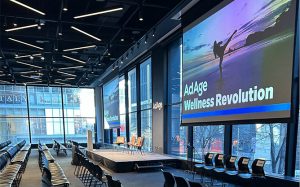What do customers want? Ease, convenience, and connection.
At BNO, we understand that creating an exceptional experience starts with empathy—and understanding what your customers need and want.
Our process starts with uncovering costly pain points and removing any friction, obstacles, frustrations, and discomfort on the customer journey or path. It means analyzing and anticipating what a customer needs in a holistic way.
People crave personalized, connected, and consistent experiences. They look to you to provide them with a seamless experience across all devices and channels with surprise and delight.
These customer experiences are what is known as CX. Slow response times, a lack of personalization, and having to go to multiple people to resolve an issue are the top complaints that can lead consumers to a negative CX.
But creating CX is more than just dealing with the negative. It means forging a greater connection between your company and customers with positive experiences and successful outcomes. That alchemy, of transforming the negative into the positive, is what CX is all about.
Last year at the start of the pandemic, Crocs listened to customers who suggested the company donate free clogs to healthcare workers on the front lines. As a result, the “Free Pair for Healthcare” initiative distributed 860,000 pairs of free Crocs in less than two months. Crocs made efforts to streamline its online purchase process—making it easier for customers to buy footwear, even if they hardly left the house. The company also began offering shoe charms from Jibbitz, winning a coveted piece of business from younger consumers eager to personalize their Crocs and make them their own.
Last year at the start of the pandemic, Crocs listened to customers who suggested the company donate free clogs to healthcare workers on the front lines. As a result, the “Free Pair for Healthcare” initiative distributed 860,000 pairs of free Crocs in less than two months. Crocs made efforts to streamline its online purchase process—making it easier for customers to buy footwear, even if they hardly left the house. The company also began offering shoe charms from Jibbitz, winning a coveted piece of business from younger consumers eager to personalize their Crocs and make them their own.
The Customer Experience Professionals Association (CXPA) defines CX as “a chain of interconnected perceptions that customers have of an organization across all touch points and people.” These days, customers are willing to pay a premium for a superior customer experience—and companies are partnering with CX practitioners and agencies to give customers what they want.
There are four key elements of effective CX management, starting with a customer-centric culture:
- The customer’s well-being is the operating principle around which the corporate culture and all employees are mobilized.
- A holistic alignment of systems and structures engages employees at every level to work together across departments to deliver positive customer experiences.
- Positive customer experiences create positive business performance outcomes, from financial (ROI, ROE, CLV) and social (positive reputation and word-of-mouth) to operational (increased customer loyalty and retention) and organizational (happier employees, greater organizational alignment).
- Once the company is focused on customer needs and engagement, its business practices start to evolve and shift. The result? Experiences that deliver on expectations with surprise and delight.

That makes CX one of the best ways to create and support sustainable business success. It also can be a huge differentiator for a brand or company in a very cluttered field of competitors.
Creative innovation is a big part of our success. When our creative teams connect to strategy and data, the results are powerful, allowing us to surpass agencies specializing in CX alone.
Looking for a partner skilled in journey mapping, CX strategy, and process? We can help you exceed expectations. It’s what we do every day. Reach out to us to learn more.




